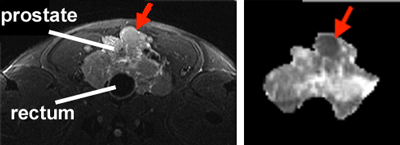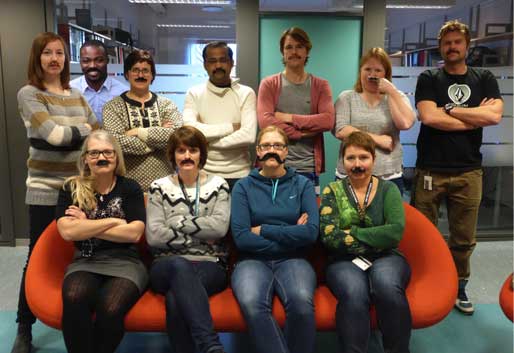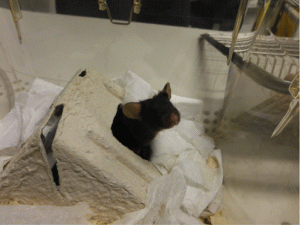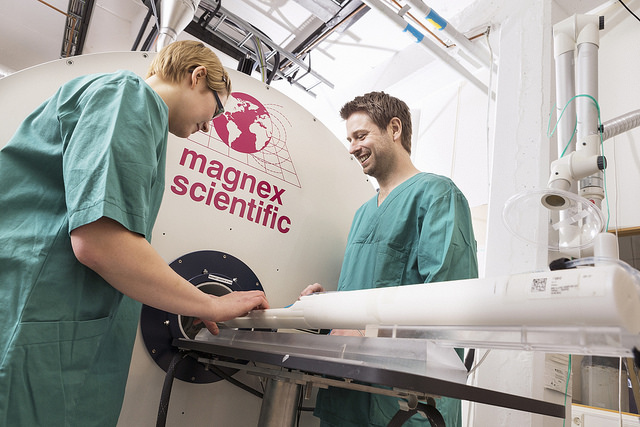Blogger: Debbie Hill,
Post doctoral fellow at MR Cancer group
As winter approaches us here in Trondheim, the art of keeping warm becomes more important; after all, the well-known Norwegian saying is ‘there is no bad weather, only bad clothes’. So, it is quite convenient that the shortening and cooling of days coincides with the month of November, or Movember as it is affectionately known, where people all around the world insulate their upper lips from the onset of winter to increase awareness of prostate cancer (and to raise some money too!).
Here in the MR Cancer group at NTNU, the ‘prostate team’ are no exception; roughly half way through the month we have cultivated some impressive moustaches.
Amongst all of the fundraising and amusing ‘facial knitwear’, it is important to acknowledge the other furry creatures that are crucial in our fight to improve prostate cancer treatment. I speak of the research animals. While we do our utmost to minimise the use of animals in research, they are currently essential for cancer studies to help us to understand how the disease develops and how we can best treat it.
It is notoriously difficult to correctly diagnose aggressive, metastatic prostate cancer from the less-aggressive kind; leading to the possibility of over- or under-treatment.
Read more about how we are tackling this problem at NTNU and St Olavs Hospital:
- Read about early markers of a potentially dangerous type of Prostate cancer
- Read about treat or not treat? The role of PET/MRI in prostate cancer
The development of a mouse model of prostate cancer, called the TRAMP model, is helping us to understand cancer progression from early-stage to late-stage (aggressive) disease. The TRAMP mice develop prostate cancer as they reach adulthood, and the characteristics of the disease closely match what we see in the clinic. We have been using the TRAMP model to help us to develop good techniques for detection of cancer-onset, to monitor disease progression, and test new drug treatments.
In the MR cancer group, we use Magnetic Resonance Imaging (MRI) to diagnose and monitor cancers. For pre-clinical research, we have an MR scanner that is specially designed for small animals, like the one in this picture.
We use the machine to take pictures, in this case of the prostate, and have been investigating which types of images are most sensitive to detection of the cancer onset. A technique called Diffusion Weighted Imaging (DWI) has been very useful in detecting prostate cancer before there is any change in the size of the prostate.
DWI is also used in the clinic to help detect cancer; it is sensitive to the movement of water within the tissue of interest. Cancer cells grow quickly and are usually densely packed, which makes it harder for water to diffuse in the tissue, therefore cancer looks different to healthy tissue in the images.

Left: MRI Image axially across the abdomen of the mouse (belly at top). Cancer in prostate is indicated with red arrow. Right: Map of the prostate from a diffusion weighted image, where dark area (red arrow) indicates less diffusion of water, indicative of cancer.
Using this technique, we can non-invasively monitor the progression of disease from the early-stages through to the late-stage. So far, we have characterised how TRAMP mice develop cancer without any intervention, and these results will act as a reference for future experiments. We are currently investigating the effectiveness of new drug treatments, as well as looking into lifestyle effects, such as diet and exercise, to see if having an active lifestyle could delay the onset or severity of prostate cancer.
Our research is ultimately directed towards improving clinical practice to help with our ongoing fight against cancer, and has been made possible by funding support from the Cancer Society and the Liaison Committee between Central Norway RHA and NTNU.
If you are inspired by our work (or by our moustaches!) please visit our medical faculty Mo-Bro team page to donate in support of men’s health issues, including prostate cancer research.



